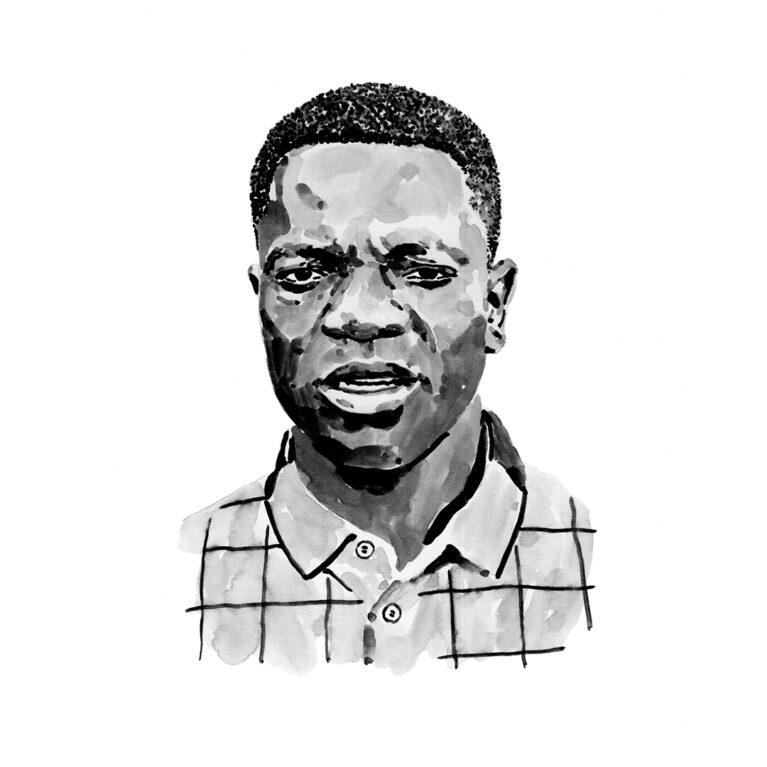Issah Seidu

Who I am
I am the founder and team leader of AquaLife Conservancy, a Ghana-based not for profit NGO dedicated to the research and conservation of marine and freshwater biodiversity. My current role at AquaLife Conservancy is to spearhead the research and conservation of sharks and rays in Ghana. I am leveraging the platforms AquaLife Conservancy has provided to train local volunteers and students to be champions of ocean conservation. In recent times, we have shown six students how to identify and monitor sharks and rays and how to conduct sampling protocols, and have tasked three of them to collect fisheries data for their theses. Before establishing AquaLife Conservancy, I worked with Herp Conservation Ghana and championed the conservation of amphibians. I also worked as a volunteer to collect fisheries data at the various landing sites in the Half Assini District. Most recently, I was a research fellow at the Centre for Climate Change and Gender Studies at the University of Energy and Natural Resources, where I led a number of small projects on climate change and women’s resilience to adaptation in the Sunyani Municipality. I hold a Bachelor’s degree in Natural Resources Management from the Kwame Nkrumah University of Science and Technology (KNUST). I also hold MPhil Wildlife Management at KNUST and recently completed my PhD programme. During this programme, I collected the first comprehensive fisheries data on sharks and rays in Ghana. I also conducted a series of after-work meetings with fishers and local communities to garner support for the conservation of elasmobranchs in west coast Ghana.
Where I work
I have worked in the coastal communities in Ghana, where fishers typically target sharks and rays for their livelihoods, and on the western coast to engage the fishers, traders and local communities there, who are key actors in the fishery sector. I have also collected extensive fisheries data on sharks and rays. I am now extending my work to the central coast, where elasmobranch fisheries predominate. Ghana’s coastline is approximately 550 kilometres (340 miles) long and is interspersed with about 90 lagoons and associated wetlands. The coastline is demarcated into three geomorphic units – West, Central and East Coast – and the coastal zone, which covers 6.5% of the country’s land area, is inhabited by a quarter of the population. The marine resources of Ghana include more than 347 fish species belonging to 82 taxonomic families. A total of 186 fishing villages and 302 landing beaches were recorded in Ghana during the 2013 national marine canoe framework survey. Fishers active along the extensive coastline use different types of fishing gear, but sharks and rays are caught mainly with three types in two combinations: drift gill nets complemented by longlines, and bottom-set gill nets. Wooden canoes are the only vessels used by artisanal fishers and elasmobranch fishers go out in three types of canoe: small (4–8 metres; 13–26 feet long and 1–2 metres; 3–6 feet wide); medium (9–15 metres; 30–50 feet long and 1–2 metres wide); and large (16–25 metres; 52–82 feet long and 2–4 metres; 6–13 feet wide).
What I do
Our current project seeks to build on the achievements we have made so far in shark and ray conservation by focusing on coastal regions that were previously not explored. We worked with fishers, canoe owners, fish traders, fish processors and other key stakeholders to collect extensive fisheries data on sharks and rays and raised the conservation profiles of these imperilled species in key communities along Ghana’s west coast. In our previous project, we found out that threats to guitarfish are escalating at an alarming rate as teleost fishes and large rhino rays continue to decline. Guitarfish are at a tipping point owing to their lucrative and high value white fins and the general eagerness of local markets to buy their meat. These threats notwithstanding, little to no data are available to guide conservation decision-makers in Ghana and across West Africa.
We have linked up with key stakeholders, who include personnel from the fisheries commissions, chief fishers, traditional and local authorities, canoe council and fish traders and processors, among others. We are expanding our network to include migrant fishers and semi-industrial fishers who target shark-like rays and aim to work closely with them to devise short- and medium-term conservation strategies for guitarfish. We have provided key baseline information on shark-like ray fisheries in Ghana, which includes the motivations and trade characteristics of the species’ products. We will also produce a systematic and science-based dataset that will contribute to understanding the biology, ecology and conservation status, while raising conservation profiles of the species in key elasmobranch fishing communities in Ghana. We are building a network of trained local volunteers and like-minded students to collect fisheries data on shark-like rays and other threatened elasmobranch species and further spearhead the conservation of these species in their various communities.
